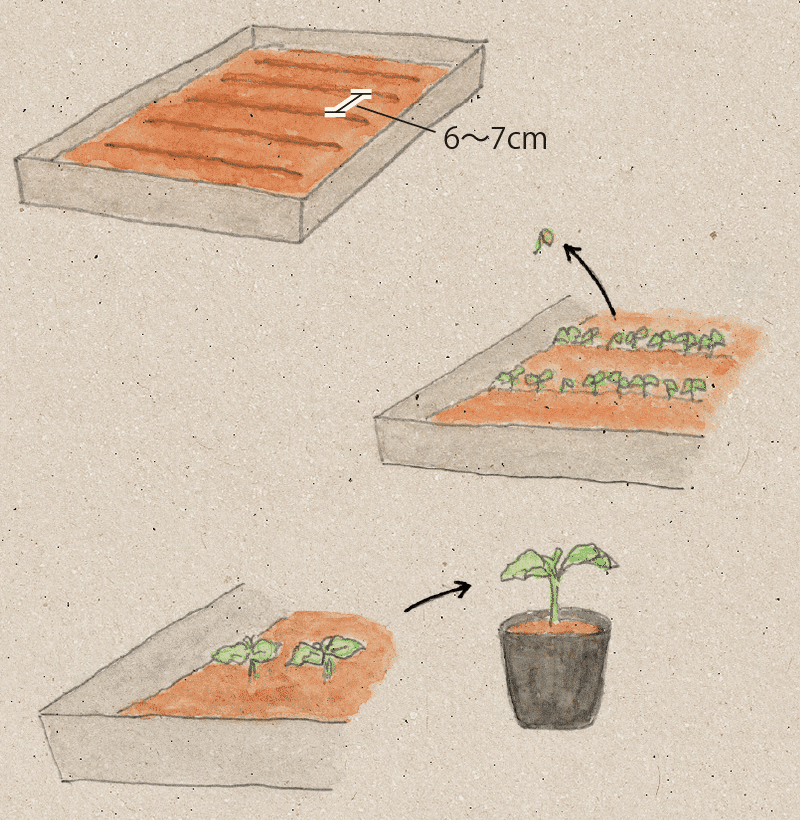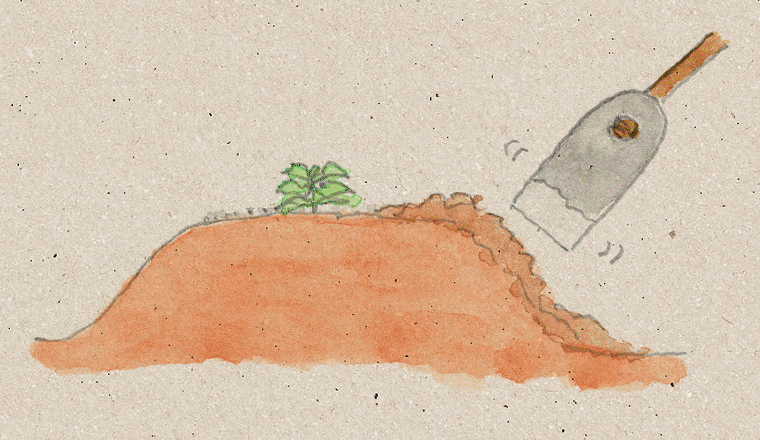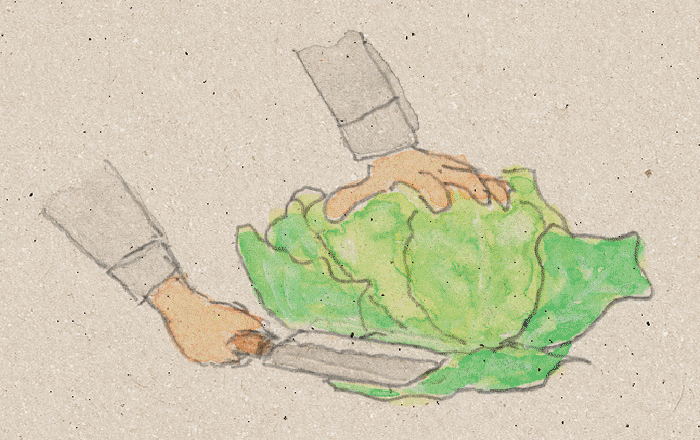

Very convenient vegetables for cooking, salads, and garnishes. Sensitive to heat, and grow well in a cool climate.

One week before sowing seeds, put soil, 30% to 40% of which is leaf mold, into a seedling tray, and add a pinch of magnesia lime. Sow seeds in stripes at 6 to 7 cm intervals, cover them with soil approximately 5 mm thick, and water well. Spread a piece of damp newspaper over the soil to avoid direct sunlight and dryness.
After sprouting, remove poor-growing seedlings mainly from crowded areas.
When the seedling has two true leaves, transplant it into a pot to have one plant per pot, and grow it until the true leaves increase to five or six.

Three weeks before transplanting the seedlings, disperse approximately 80g of magnesia lime over the soil per square meter, and plow well. One week later, apply 50g of compound fertilizer, 50g of calcium superphosphate, and 30g of potassium sulfate, over the soil per square meter, and plow the soil again to mix them well. Then, create ridges with a width of 60 cm and a height of 20cm.


Plant seedling having five to six true leaves at 40cm intervals between the roots. When doing this, create a dent around the base of plant to store water and prevent it from flowing out from the ridges.

Approximately two weeks after planting, when the seedlings take root, apply 10g of compound fertilizer on the ridge side for the roots of each plant and earth up the soil. Approximately 20days later, add the same amount of the fertilizer between the ridges, plow lightly, and earth up the soil. Continue adding the fertilizer until the leaves begin to form a head.

Green caterpillars or diamondback moths may cause damage to the crop. Exterminate them while they are small larvae. When using chemical agents, apply Orutoran (acephate) granules on the planting holes, or spray Orutoran wettable powder up to two weeks before harvesting.
The harvest time is around 20 to 30days after the bud in the center begins to make a roll. Harvest the crop by cutting off the base section of the plant with a knife when the head is firmly tightened.
